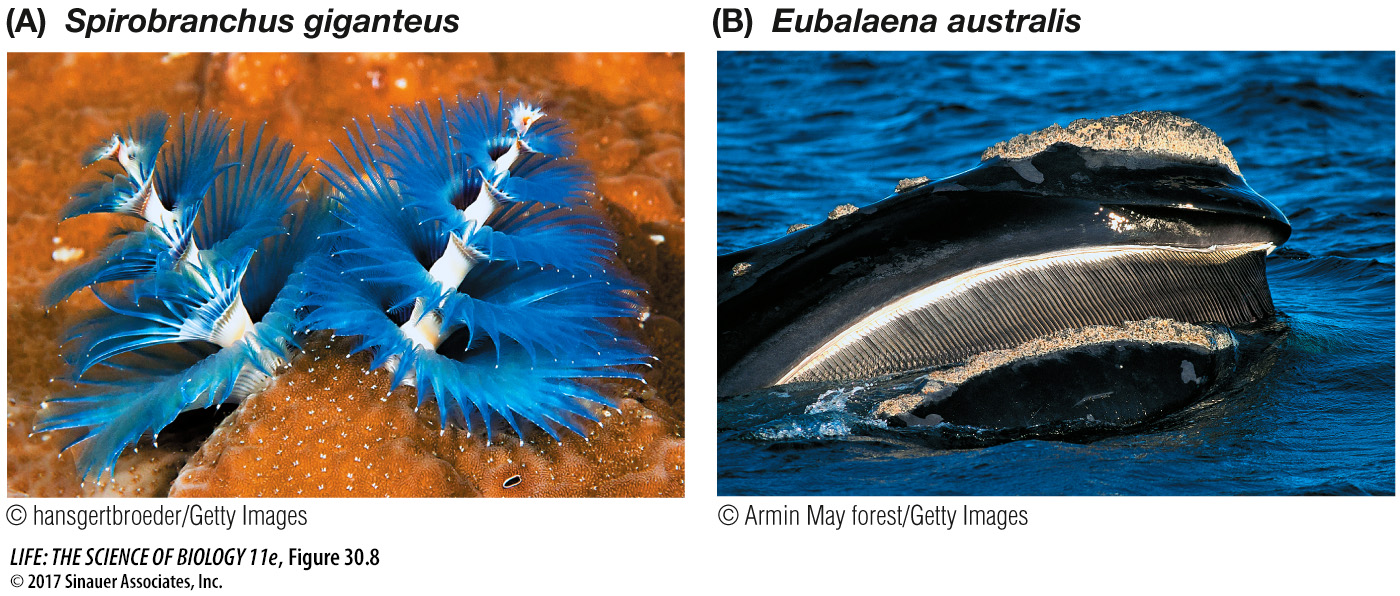Filter feeders capture small prey
Air and water often contain small organisms and organic molecules that are potential food for animals. Moving air and water may carry those items to an animal that positions itself in a good location. Other animals can move through the environment, filtering out prey items as they move. In either case, filter feeders use some kind of straining device to filter the food from the environment.
Page 644
Many sessile aquatic animals rely on water currents to bring prey to them (Figure 30.8A). Some sessile filter feeders (such as sponges; see Figure 30.2) expend energy to move water past their food-capturing devices. Motile filter feeders move their bodies to the nutrient source. Flamingos, for example, use their serrated beaks to filter small organisms out of the muddy mixture they pick up as they wade through shallow water. Baleen whales—the largest animals that have ever lived—are filter feeders that strain tiny crustaceans from the water column as they swim (Figure 30.8B).

Figure 30.8 Filter-Feeding Strategies (A) Sessile marine filter feeders such as this Christmas tree worm, a polychaete (annelid), allow the ocean currents to bring their food—plankton—to them. (B) The southern right whale is a motile filter feeder that strains small crustaceans such as krill from the oceans for its food.
Media Clip 30.2 Filter Feeders
